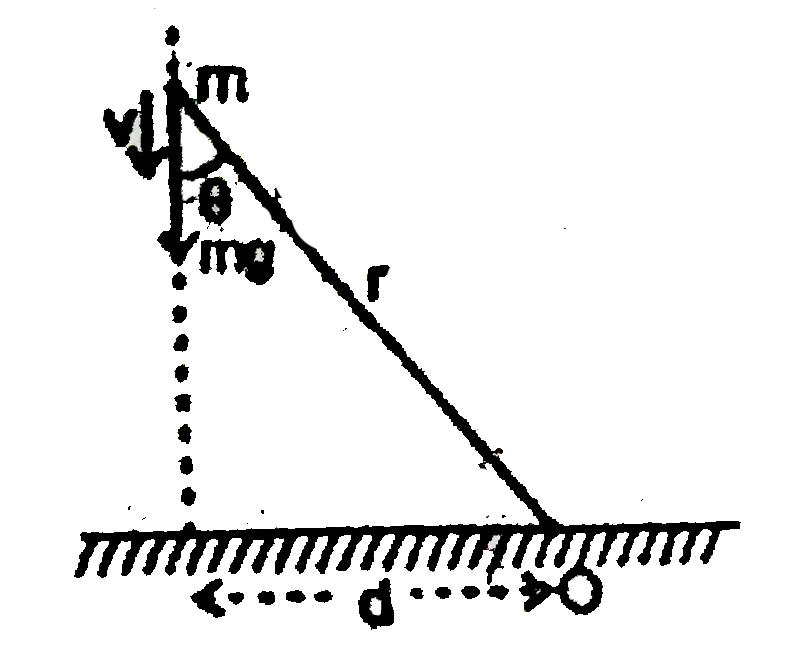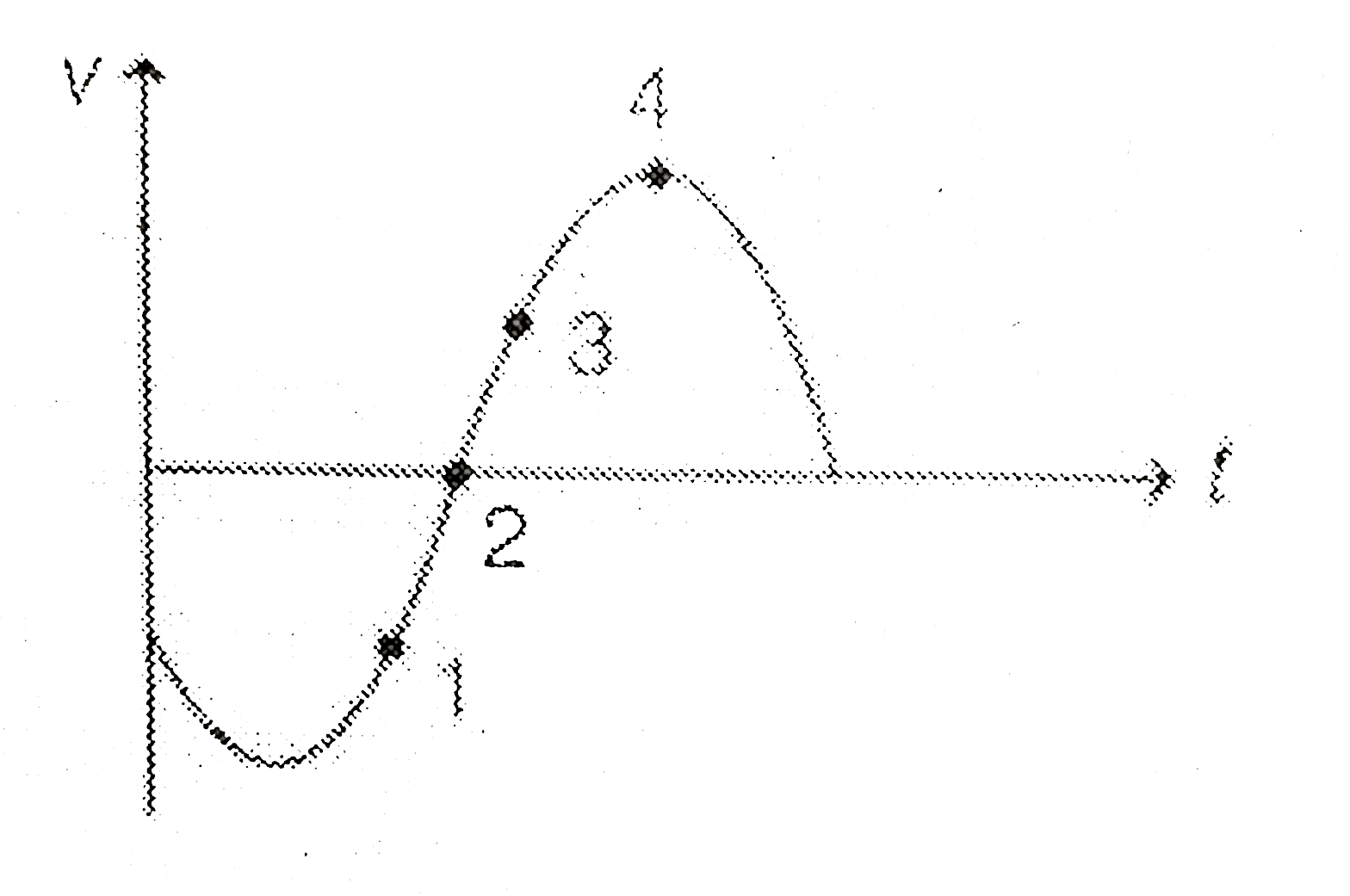A particle falls freely near the surface of the earth. Consider a fixed point O (not vertically below the particle) on the ground. Then pick up the correct alternative or alternatives.
Angular momentum of the particle about O is increasing
Torque of the gravitational force on the particle about O is decreasing
The moment of inertia of the particle about O is decreasing
The angular velocity of the particle about O is increasing.
The correct Answer is:B
The magnitude of angular momentum of particle about O=mvd
Since speed v of particle increases, its angular momentum about O increases.
Magnitude of torque of gravitational force about O=mgd ⇒ constant.
Hence MI of particle about O decreases.

angular velocity of particle about O=vsinθr
∵ v and sinθ increases and r decreases
∴ angular velocity of particle about O increases.
Topper's Solved these Questions
Similar Questions
A particle is fired vertically upwards from the surface of earth and reaches a height 6400 km. Find the initial velocity of the particle if R = 6400 km and g at the surface of earth is 10m/s2.
View SolutionA particle is thrown vertically upwards from the surface of the earth. Let TP be the time taken by the particle to travel from a point P above the earth to its highest point and back to the point P. Similarly, let TQ be the time taken by the particle to travel from another point Q above the earth to its highest point and back to the same in terms of TP,TQ and H, is :-
View SolutionA heavy particle of mass m falls freely near the earth's surface.Whati si the torque acting on this particle about a point 50 cm east to the lie of motiin? Does this a point 50 cm east to the line of motion? Does this toruque produce any angular accelertio in the particle?
View SolutionA particle is projected vertically with speed V from the surface of the earth . Maximum height attained by the particle , in term of the radius of earth R,V and g is ( V < escape velocity , g is the acceleration due to gravity on the surface of the earth )
View SolutionA particle is given a velocity ve√3 in a vertically upward direction from the surface of the earth, where ve is the escape velocity from the surface of the earth. Let the radius of the earth be R. The height of the particle above the surface of the earth at the instant it comes to rest is :
View SolutionVelocity-time graph of a particle executing SHM is shown in figure. Select the correct alternative(s).
 View Solution
View SolutionOn a wave pulse travelling towards left, there is a particle A as shown in the diagram. Referring to the particle A, choose the correct alternative.
 View Solution
View SolutionA particle is throws vertically upwards from the surface of earth and it reaches to a maximum height equal to the radius of earth. The radio of the velocity of projection to the escape velocity on the surface of earth is
View SolutionAccleration-time graph of a particle executing SHM is as shown in figure. Select the correct alternatives(s).
 View Solution
View SolutionSTATEMENT-1 : A particle is projected with a velocity 0.5√gRe from the surface of the earth at an angle of 30∘ with the vertical (at that point ) its velocity at the highest point will be 0.25√gRe
because
STATEMENT-2 : Angular momentum of the particle earth system remains constant.View Solution

